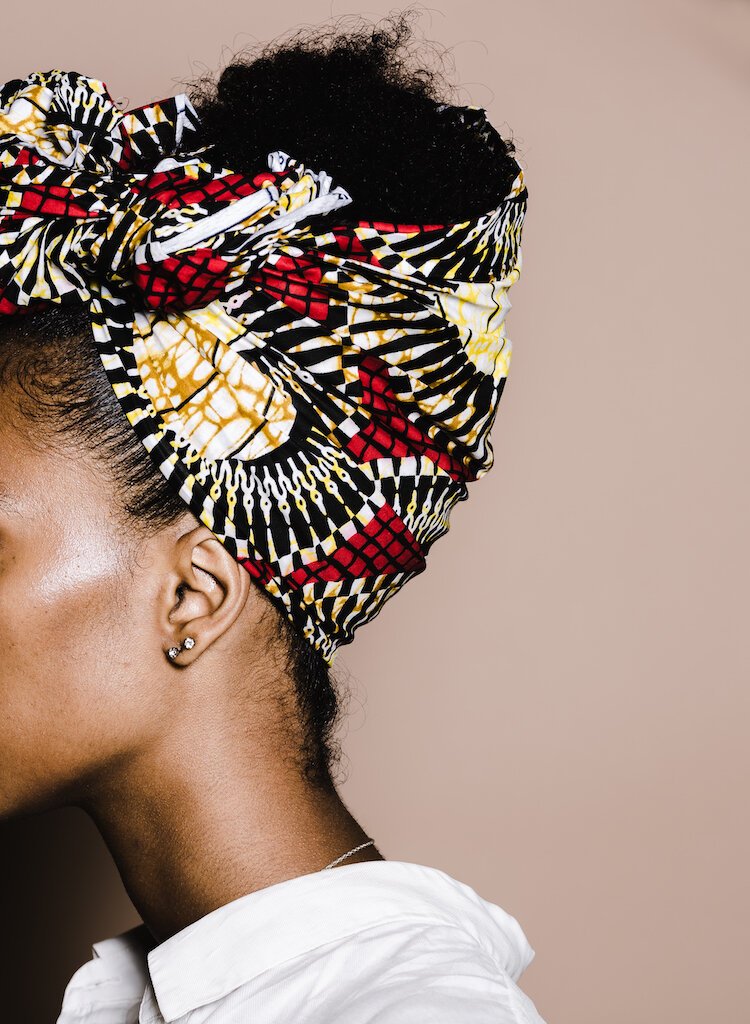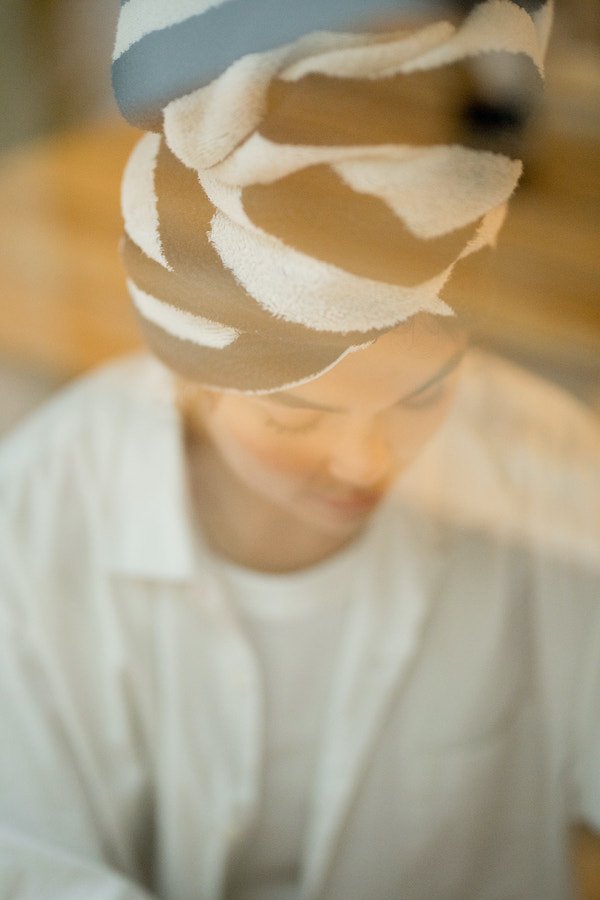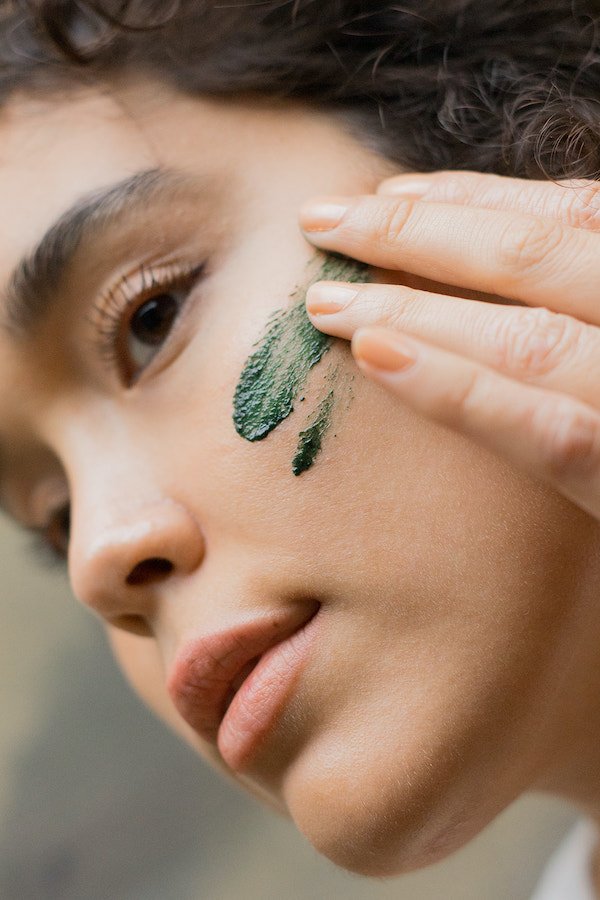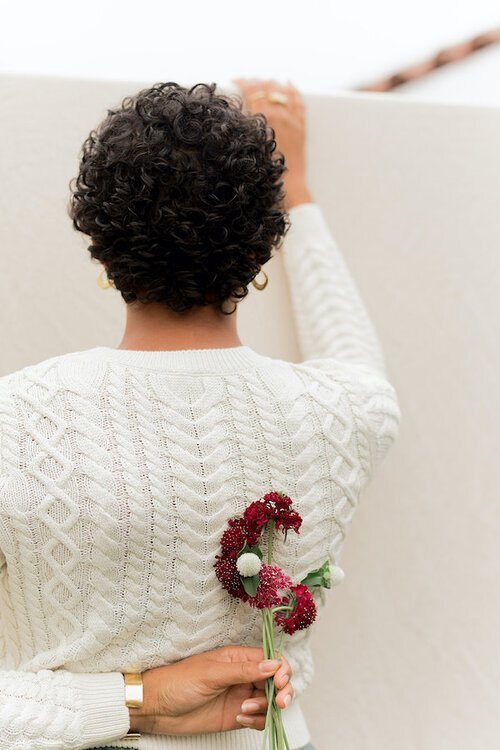
How I Knew It Was Time To Go Natural With My Hair
I will never forget sitting on the floor between my mother’s legs while she vigorously pulled at my hair. As a kid, the pain was unbearable, and my mother had no patience for my mane, who knew no master. Every morning, she tugged, brushed, and combed my voluminous curls, trying her best to tame them into orderly braids on my head. As she made plans for my first Communion, taking me to the local Dominican hair salon to get my first relaxer was at the top of her to-do list.
I had never known such shiny and silky tresses. The hair that grew out of my scalp was always characterized as “difficult” and “unruly,” and this new hair was reserved for Disney princesses, movie stars, and the fancy women I saw on the street. I treasured how I could suddenly flip and tie my hair up with ease into styles from magazines, emulating the women I saw on-screen.
Straight hair felt like a rite of passage, and it meant leaving natural hair behind like a relic of my childhood. I soon became accustomed to getting my hair professionally treated and straightened. My mom had a relaxer. My aunts had relaxers. My best friends’ mothers had them. As I grew older, most of my Black female peers had relaxers too.
“Relaxed hair did not come without its own brand of pain, labor, and limitations.”
But relaxed hair did not come without its own brand of pain, labor, and limitations. I could no longer jump into the pool without abandon because the magic atop my head would disappear, like a carriage turning back into a pumpkin. And you could forget about Saturday morning cartoons—getting a “wash and set” every weekend took at least two hours.
I also learned firsthand how to speak up and advocate for myself when the searing heat permeated my scalp, waving my hands frantically in the salon chair to signal the burning sensation, which typically meant the frothy concoction was ready to be rinsed out.
In Chris Rock’s documentary “Good Hair,” there is a clip where a scientist dunks a Coca-Cola can into a beaker full of relaxer—a white cream made up of several chemical compounds, including sodium hydroxide. Within a few hours, the can disintegrates completely.
But even after knowing the risks, the axiom shared by the older women around me reverberated in my head: Beauty is pain. If we can nick ourselves shaving and clench our fists to bear getting waxed, what’s a little burn?
For all of my adolescence, I continued this ritual. I spent eight years in predominantly white institutions, and I wanted what every other teenager in America wants: to fit in and be accepted. To wear my hair naturally was an idea as unfathomable as carrying a flip phone to school; it just wasn’t done. Moreover, the Black women in popular media depicted as strong, beautiful and successful all had straight hair.
When I was in college during the mid-2010s, thousands of Black women began shunning relaxers, returning to their roots and documenting the process on social media. This reclamation, commonly known as the natural hair movement, provided representation and guidance to Black women at a time where there really wasn’t any.
“The natural hair movement provided representation and guidance to Black women at a time where there really wasn’t any.”
Suddenly, it seemed like the people around me decided it was time to let go of their chemically straightened strands too. My mother started rocking a buzz cut, and my childhood best friend flaunted a head full of bountiful curls. I was surprised to see them take that leap yet anxious about the social pressure to do the same.
I was trying to navigate the professional world as an adult, and I didn’t feel comfortable enough to stop using relaxers, even though they were becoming less popular. I felt ill-equipped; I never learned how to cornrow my hair, style baby hairs, or parse what kind of weave would last the longest. While my trips to the salon were inconvenient and expensive, I was afraid to delve into the unknown.
It wasn’t until a recent trip to the salon that I decided I was finally done with the “creamy crack.” When my stylist parted my hair to protect my scalp for my quarterly touch-up, I heard her gasp when she found not one but four bald spots on my head. Those areas were exactly where I got chemical burns the previous time I was there. I’ve absentmindedly picked at them before, but this time my scalp decided it had had enough.
To my stylist’s confusion, I was shockingly calm. It was hair—hair that would grow back, or not grow back. Who cares? I thought. I was done with the restrictions that came with relaxed hair, restrictions I’d endured for almost two decades. And as I left her chair that day, I resolved to embark on a new hair journey.
Since then, I’ve turned to beauty products, guides, and tutorials—many a result of the natural hair movement’s ascent—to learn how to care for my natural hair and create my own styles. With the help of Youtube and the local beauty supply store, I discovered how to install box braids and even swam in the ocean a few times this past summer. When it drizzles outside, I no longer have to panic about how my hair will look once it dries.
“I take pleasure in raking my fingers through my hair, discovering what my natural texture feels like.”
I am no longer afraid. I take pleasure in raking my fingers through my hair, discovering what my natural texture feels like. While I stopped straightening my hair for health reasons, I did not know the extent of freedom that awaited me on the other side.
By going natural with my hair, I am returning to myself once more—and it’s a liberating and beautiful feeling, after all this time.
Ondine Jean-Baptiste (she/her) is a writer based in Brooklyn who cares deeply about the intersection of gender, health, and identity. You can find her starting conversations about gender-based discrimination and harassment at The Catcall Collective, or talking about reality TV on Twitter.




